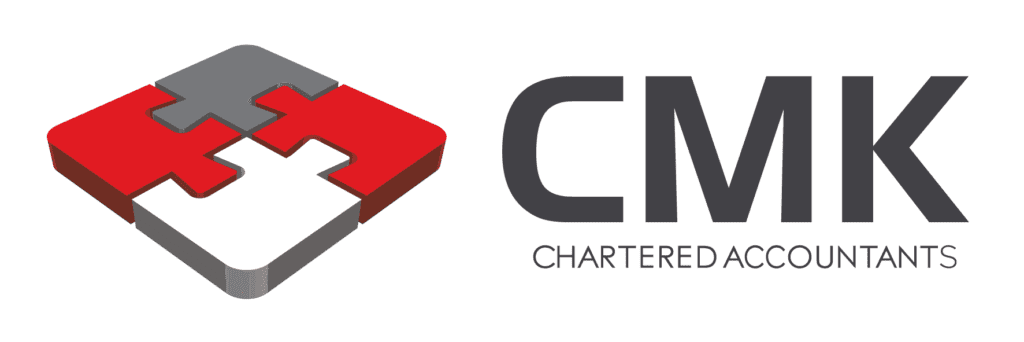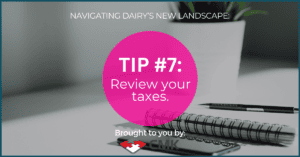News

Navigating dairy’s new landscape: 7 Steps to surviving the payout challenges
THIS BLOG IS BROUGHT TO YOU BY:

The dairy industry has been under immense pressure over the last 18 months and has faced challenges on many fronts including compliance and increased costs such as feed, fertilizer and fuel. The announcement of a drop in this season’s forecast payout could be the biggest challenge that farmers face over the next period of time.
Average farming costs have risen to an average of $5.25 for a farm owner and bank margins have risen and therefore the cost to borrow money. The average farmer has $28 of debt per KgMs and pays $2.38 in interest per KgMs. If lower payout levels stick around then we must take action now to make our businesses are resilient and fit for the future.
Here are seven factors to have in place to weather what’s ahead:

Your farm and business may be the most important assets that you have. The vast majority of farm owners in New Zealand are committed to the long term and have a strong desire to see their farm pass on to the next generation. In order to achieve this goal, you need to look after your business, understand it and develop it so it can support you and the generations that follow. The satisfaction of achieving this will give certainty and peace of mind.
Knowing your numbers is a skill that needs to be mastered in order to have a better farming business. It requires time to understand your cashflow and profitability.

Your Statement of Position is essentially a snapshot of your farm’s financial health.
It lists your assets (what you own) and liabilities (what you owe). Understanding your Statement of Position helps you gauge your net worth and your farm’s ability to meet its obligations. This is important not only for your own financial planning but also for demonstrating your farm’s financial stability to lenders, investors, and other stakeholders.
Note that the number that you may think you are worth is not the same as the banks. For example, land and buildings for all the major trading banks will use 65% as its lending value.
Everyone wants security and lenders are no different in this regard. Money lenders require security against the money that they lend you. This is often in the form of a mortgage over land and buildings, a specific security agreement over livestock and shares, or a general security agreement over assets. Lending values then apply to what percentage a bank will lend against each asset.
Example 1:
The security value on a $1,000,000 piece of farmland is up to 65% of the total value (dependent on the cash available to pay the interest component).
It is important to note that the value of the land has to be agreed upon by the bank and supported by a valuation or their appraisal. This often includes lands sales of a similar type within the district.
Example 2:
A bank will lend 60% of the value of livestock (dependent on the cash available to pay the interest component).
The value of the livestock will be at banking value, not necessarily market value. This means that what you can borrow is a lot less than what you may be expecting. For example:
100 Friesian cows to be purchased for $2,050 each equates to $205,000 total funds required.
A specific bank will value those cows at $1,800 per cow, totalling $180,000, the lending value against this is 60% equalling $108,000.
In this scenario, you would need to have $97,000 and borrow $108,000 to purchase the herd and meet the security parameters.

Review your expenses to ensure you’re getting value for the money you’re spending. This involves assessing your inputs (such as feed, fuel and equipment) and evaluating their impact on your output (milk production, crop yield etc.).
Look for areas where you might be overspending or where adjustments can be made to increase efficiency and reduce costs.

A cashflow forecast helps to identify any potential shortfalls in cash that may hinder your business operation. A cash flow forecast can also identify possible cash surpluses which can be utilised elsewhere in the business.
A cash flow forecast also provides a clear direction to external stakeholders (such as your bank) about where your business is trending on the basis of existing production. It also shows where your business stands with regards to pay-out figures at the date of preparation.
Your cash flow forecast may also be used to determine your overdraft requirements for an up-coming time period and allows for these limits to be set. This helps to ensure you are not holding longer-term borrowings in expensive on-call accounts, therefore reducing interest charges.
A cash flow forecast lets you plan for significant expenditure during the year and lets you know whether these expenses can be funded from cash or if additional borrowings are required.

When dealing with your bank manager, it is important to recognise that the bank wishes to understand your equity position, profitability, cashflow, sustainability, and your history or knowledge within the industry.
With a strong understanding of your business numbers, you will know that these can be covered off by providing the following documents:
- Statement of Position
- Three years of budgets including a status quo budget
- Three years of historical Financial Statements
All bank managers like to be informed early of any potential pinch points in your cashflow. You want the bank to recognise that you know your numbers and that you understand what they want from you. More so, you can point out what you want from them.

Once you have budgeted, don’t just put it in the drawer. Over time, continue to update your budget (called re-forecasting) whenever necessary. This may be when the payout changes, interest rates change or when there are on-farm operational changes that impact production or expenses.
In the ever-evolving landscape of dairy farming in New Zealand, where external factors like fluctuating payout rates, rising costs, and market volatility are constant challenges, proactive financial planning has never been more crucial. Yet, the true power of a financial plan lies not just in its creation, but in its consistent monitoring and application.
Imagine having a detailed map of your farm’s financial journey that’s constantly updated. Monitoring your financial plan provides real-time insights into your progress. It helps you identify potential problems, allocate resources where they are needed most, and take opportunities as they arise.

As a farmer you are in the enviable position that there are a number of tax planning opportunities that are available to you and as such you should be using them.
The most obvious tax planning opportunity is the Income Equalisation Scheme and below is an example of how it works:
You are trading through a company and have a surplus of $400,000. Tax payable on this would be $112,000.
If you do nothing over the next twelve months your tax will be as follows:
- Terminal Tax $112,000
- UOMI $7195
- Provisional Tax $117,600
- Total $236,795
If you make a $260,000 income equalisation deposit your tax liability will be as follows:
- Terminal Tax $28,040
- Provisional Tax $29,442
- Total $57,482
This is a total tax saving of $170,313 over the twelve-month period. You will also save on interest as the tax payments haven’t been paid and you will be receiving interest on the funds invested at Inland Revenue. In reality for some New Zealand dairy farmers there may be no tax payable at all during this time. Tax Management (both in timing and the dollars involved) is vitally important and if your Accountants are not reviewing your taxes then please do not hesitate to give us a call.
Are you prepared to navigate the challenges ahead and ensure the financial resilience of your farm business?
Our team at CMK Accountants are here to guide you every step of the way. From understanding your farm’s financial health to optimising tax strategies, we’re dedicated to helping you weather the ups and downs of the dairy industry and build a secure future.
Contact us today for a free review of your business and take the first step towards a stronger, more resilient farming business.














